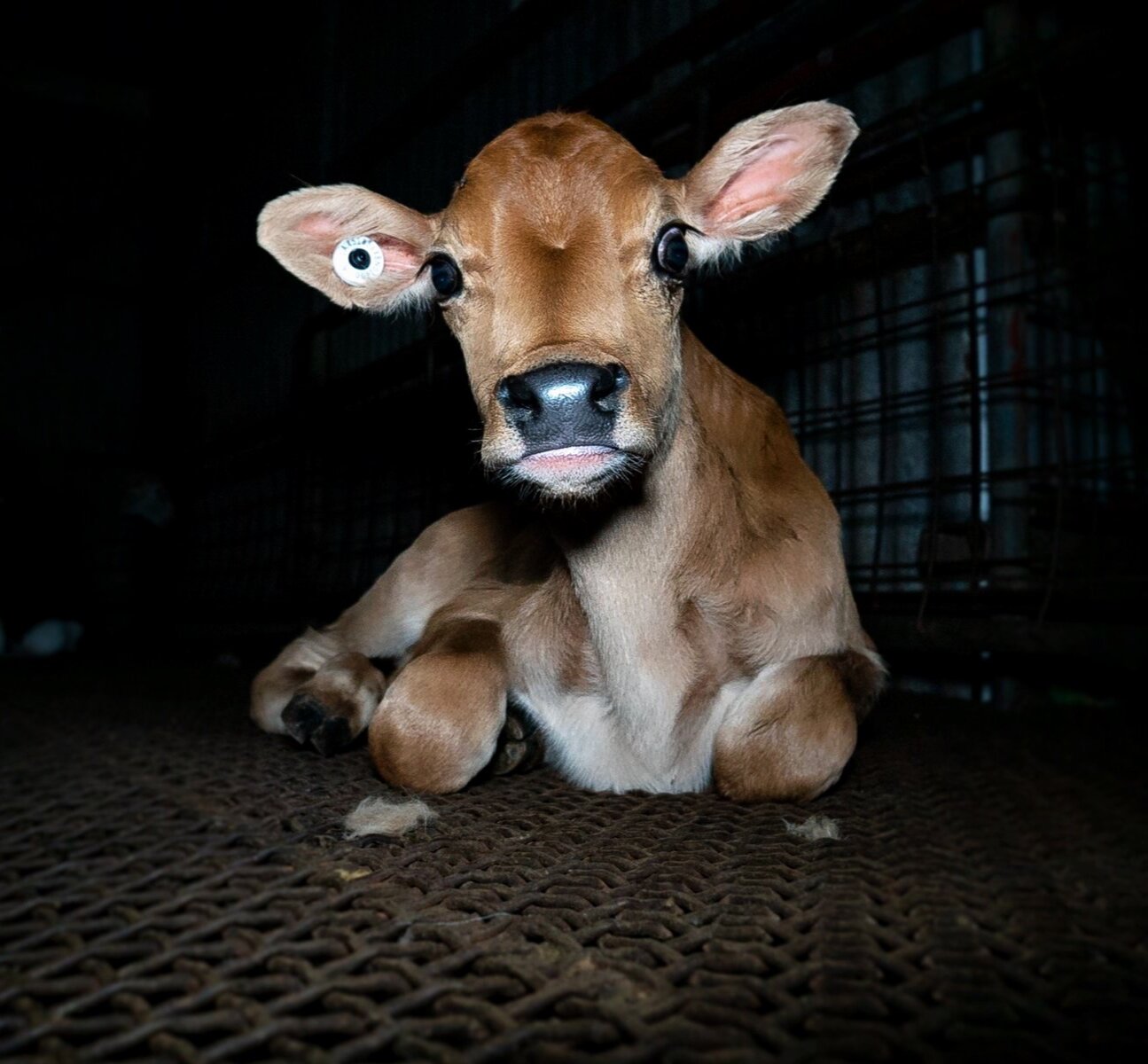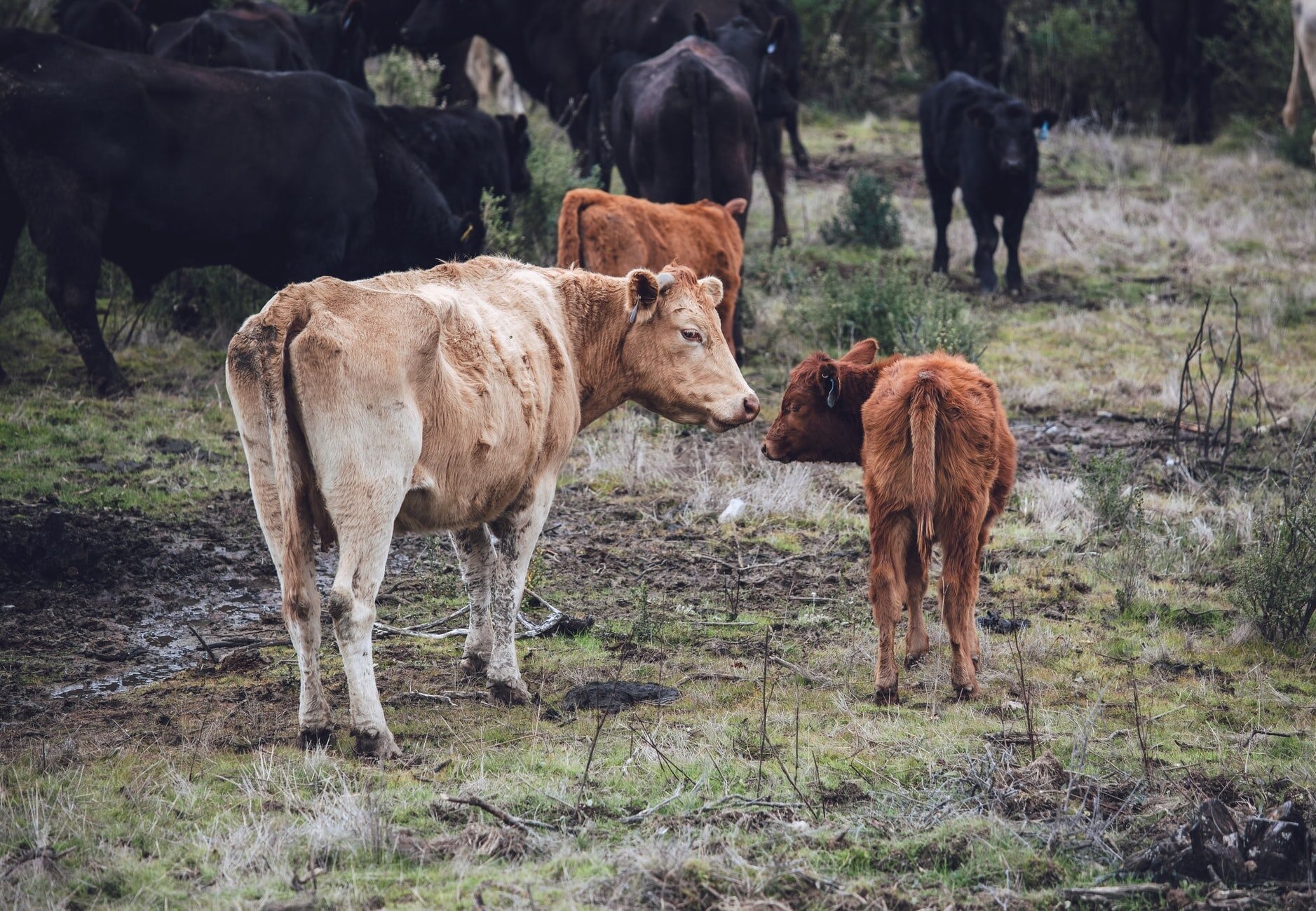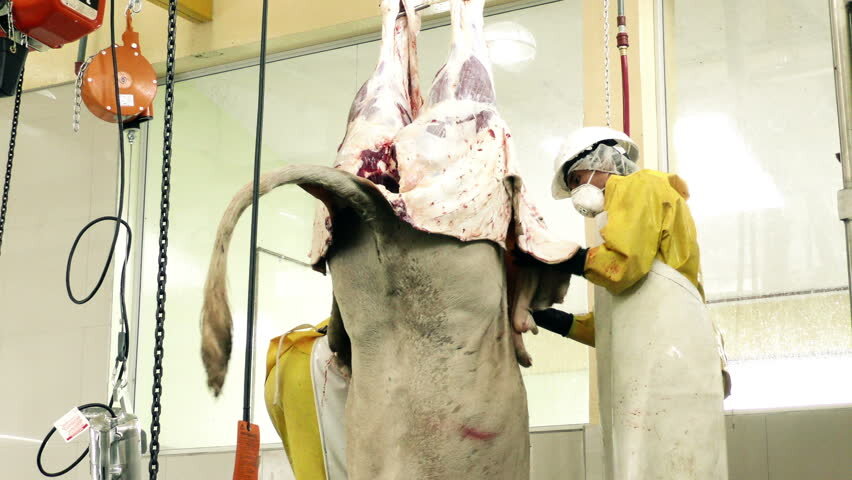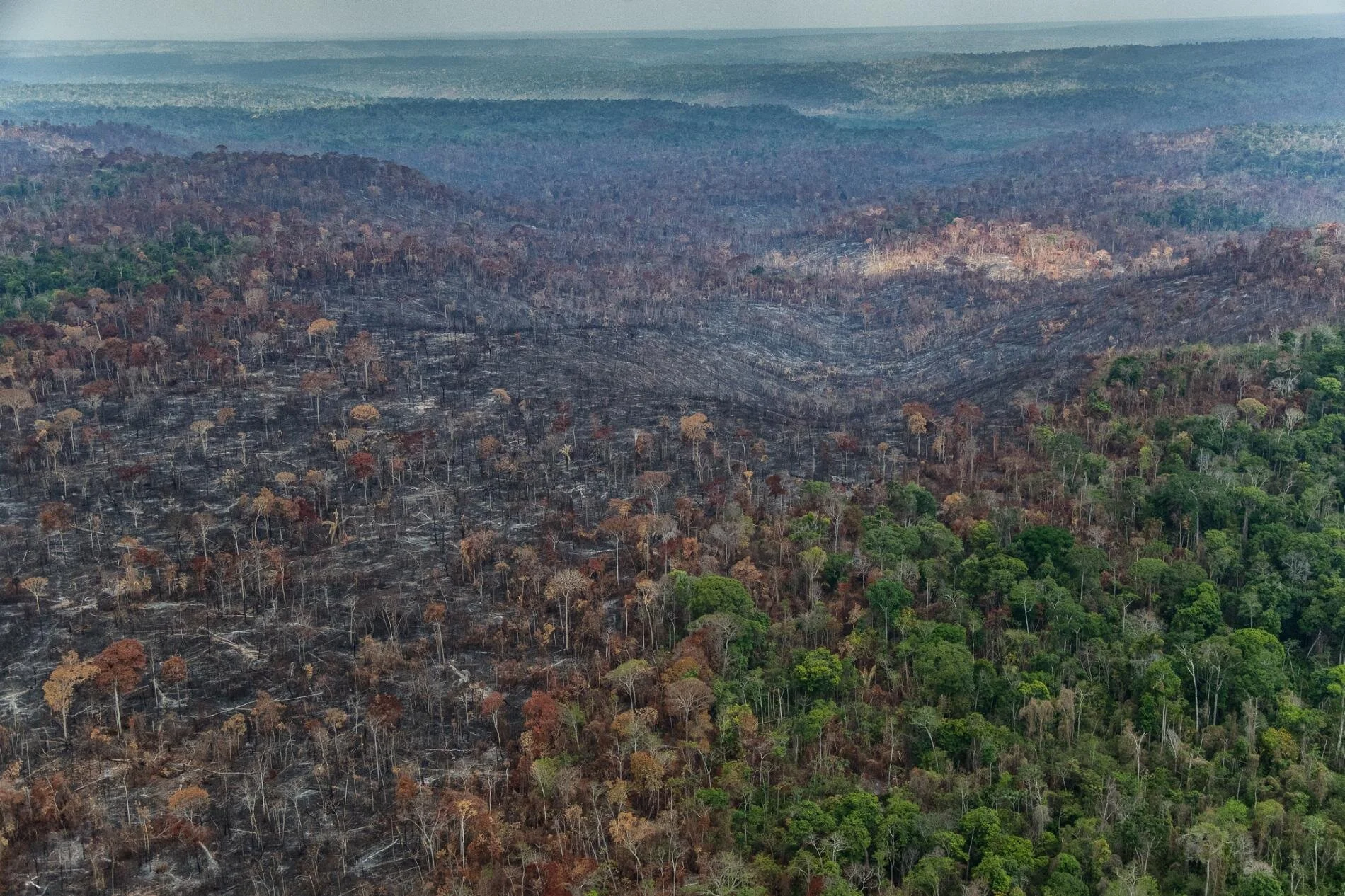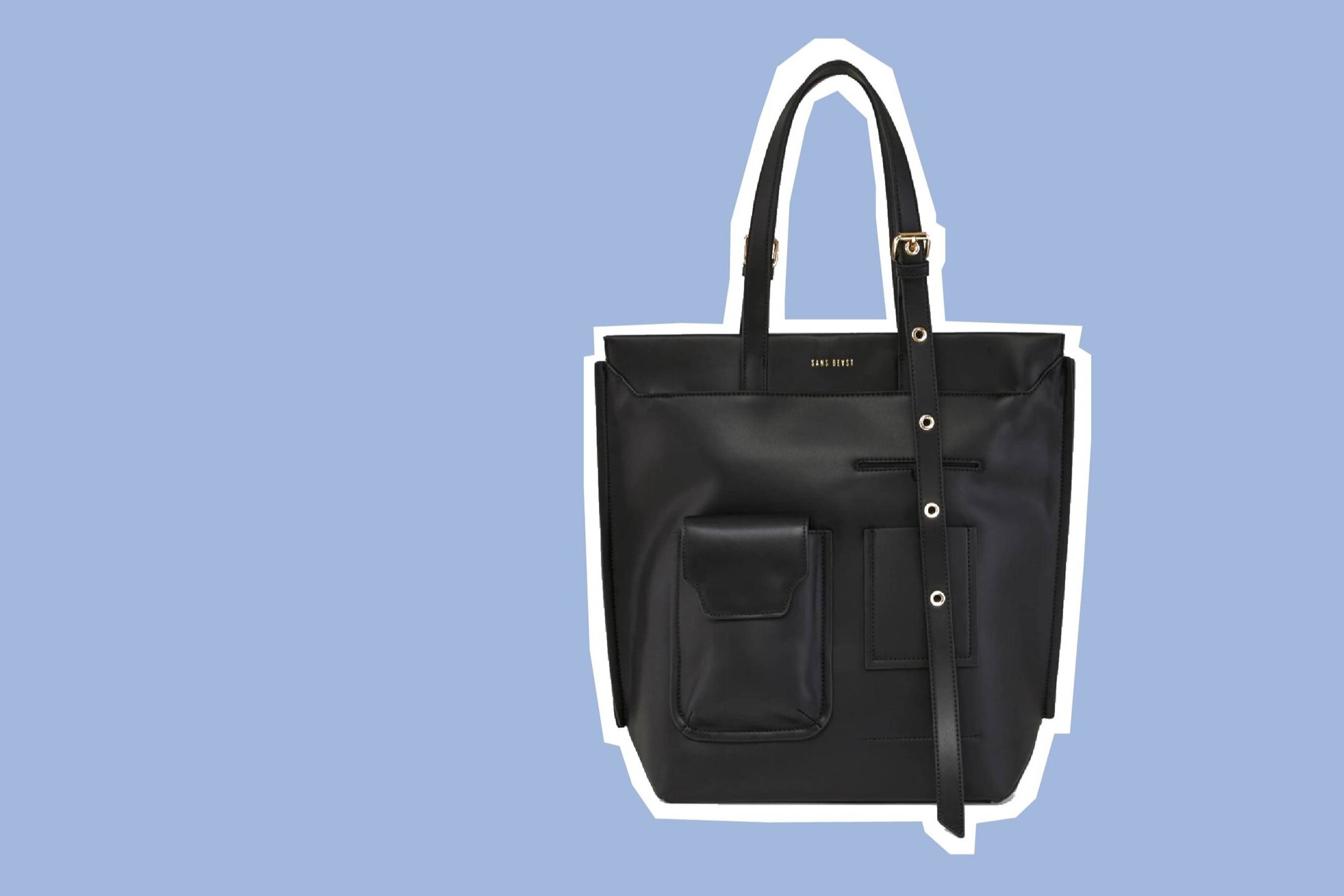Issues in the bovine skin leather supply chain
Leather production is killing cows, biodiversity and our climate, but we have solutions to move beyond this.
The most commonly used animal skin in the leather industry comes from bovines: cattle and buffalo.
Cattle are inquisitive, sentient creatures. They get excited when they learn, enjoy music, and have best friends who they miss, feeling stressed when they are apart.
When calves have been hurt or separated from their mother, they go into a depressive state and exhibit pessimism.
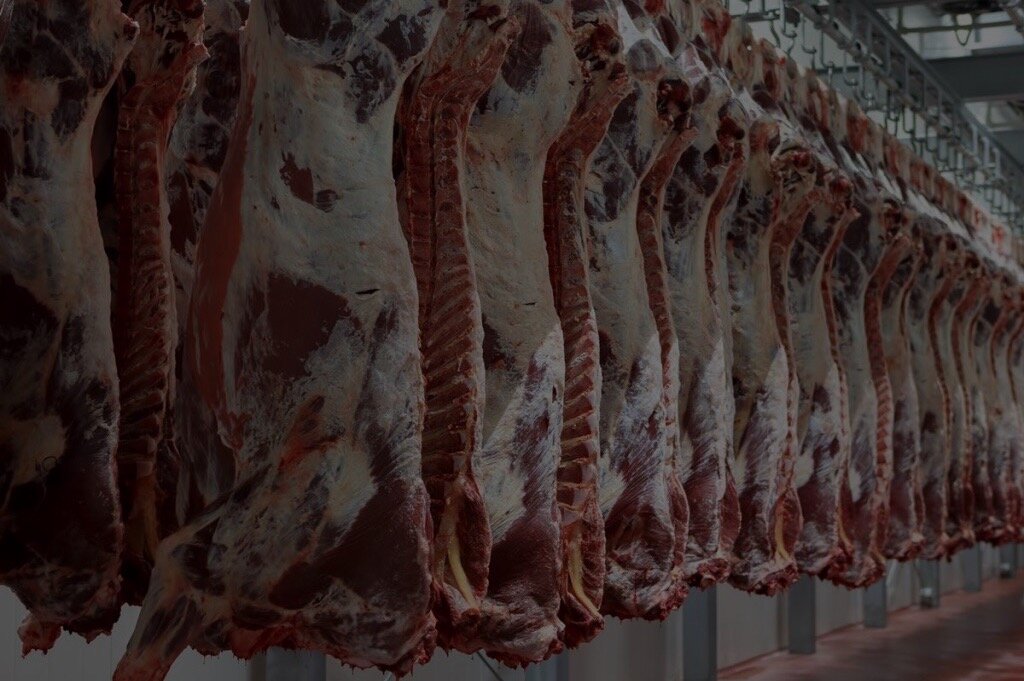
Leather is a co-product of the beef and dairy industries.
Leather is often referred to as a ‘by-product’ and made out to be financially insignificant by the industry which profits from this narrative. This argument is used to claim that buying leather is not really supporting animal slaughter or environmental harm, but rather reducing waste. This is not accurate.
Animal skins are worth a vast sum to the meat and dairy industries. The global leather goods market was valued at USD 468 billion , with the global skin market estimated to have reached a USD 137 billion valuation in 2024.
Cattle are slaughtered in both beef and dairy industries, and while the skin of a cow slaughtered in the beef industry may be worth less than their flesh, it is profitable all the same.
For this reason, these industries refer to cattle skins as a valuable ‘co-product’ [PDF 654KB] in their own reporting.
Buying leather supports these slaughter industries, and without the sale of it, these industries would struggle financially.
In fact, abattoirs who have reported reduced sales of cattle skins have seen multi-million dollar losses. Too, sometimes calves are raised specifically for their soft skins.
These losses have been quoted as, in part, due to the rise of vegan leather alternatives. These materials have been found to be less environmentally impactful to produce – even PU synthetic leather, though we must ultimately move to bio-based, next-gen materials.
The beginning of the leather supply chain
Forced impregnation
The first stage in the leather supply chain is breeding. In the dairy industry, artificial insemination, or AI, is standard practice.
During AI, bulls are forced into ‘electro-ejaculation’, where an anal probe is pushed inside a bull’s rectum, stimulating him until he involuntarily ejaculates.
Farmers then force an instrument containing bull semen into a cow’s vagina, with their arm inserted into the cow’s anus so the semen can be deposited into her cervix.
This stressful violation occurs annually until dairy cows are considered ‘spent’, and are killed less than halfway into their natural lifespan.
These cows are only ‘spent’ because of the incessant, forceful cycle of impregnation, birth and re-impregnation throughout their young lives.
Separation
All calves are separated from their mothers, whether they are considered ‘wastage’ in the dairy industry or are intended to replace their mothers in the ‘milking herd’ one day.
Calves are taken from their mothers so that the milk intended for them can be sold and turned into cheese, butter and other products known to harm human health - especially in Asian and Black communities who are commonly intolerant to lactose.
Separation is unsurprisingly extremely stressful for both mother and calf. Mother cows have been recorded chasing the vehicles taking their young away, and calves often experience extended feelings of depression afterwards. Both mother and calf often cry out for each other for extended periods.
Calves who aren’t slaughtered are then fed powdered milk.
Calf killing
Even when a calf raised for beef stays with his mother, they will be separated when she is sent to slaughter, where he will go soon after.
As with any mammal, cows must be impregnated to produce milk. Because male calves will never produce milk, they are considered as ‘wastage’ in the dairy industry. As a result, they are either slaughtered within a week of birth or raised briefly and slaughtered for veal.
Only three-quarters of female calves are required to ‘replace their mothers’ when they are culled, so the other quarter are all slaughtered soon after birth too.
Because of their young age, these calves’ skins are very soft and considered extremely valuable.
Image: Animal Liberation
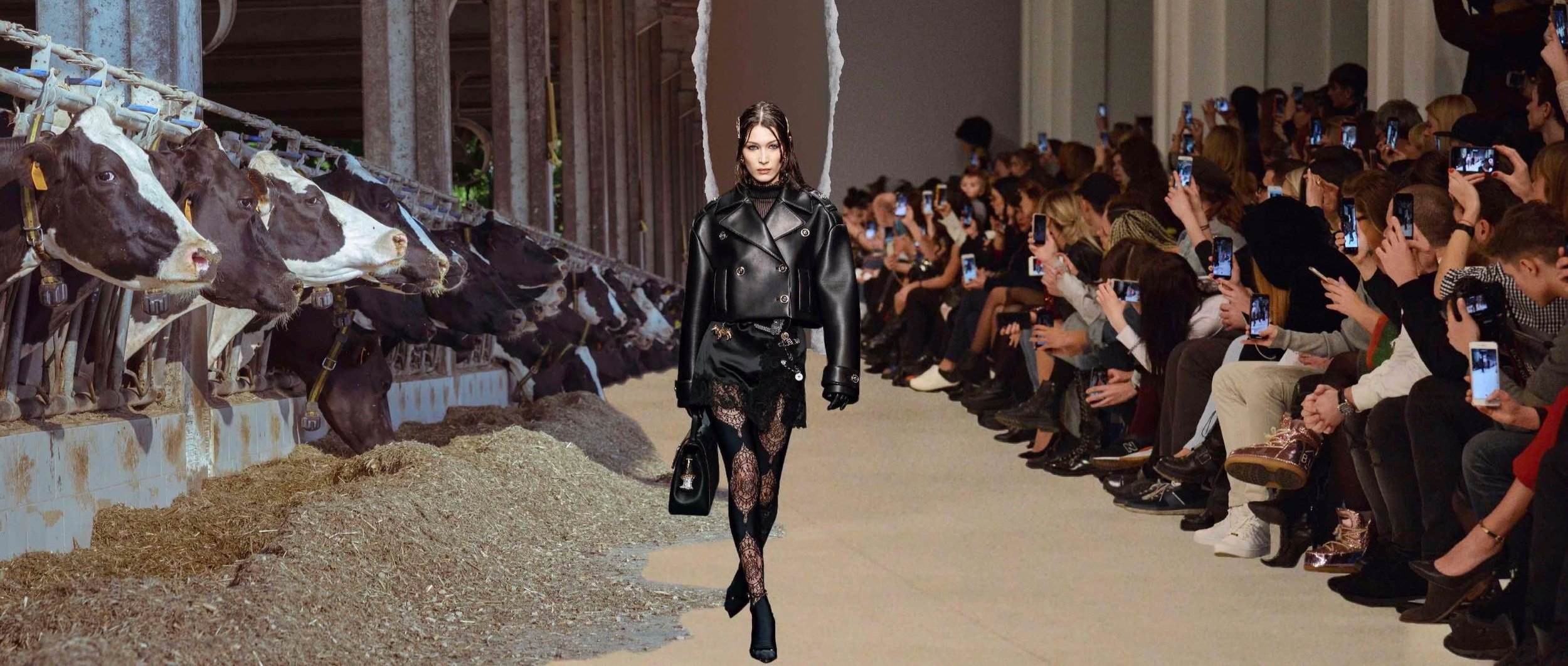
Leather is chemically processed skin.
Mutilation
Cattle are legally and painfully mutilated without anaesthesia or medical relief during a process called ‘dehorning’ or ‘debudding’, where sharpened tools are used to cut or burn off their growing horns or horn buds. Horns are connected to a cow’s sinus, and have large amounts of nerves inside them. Hot or nitrogen-cold branding and castration also occur without pain relief.
Video: Animals Australia
Off the farm and into the slaughterhouse,
the next stage of the leather supply chain
Slaughtering
In the beef and dairy industries, the method of slaughter considered ‘best practice’ for fully-developed cattle is to shoot the animal in the head with a captive bolt gun to render them unconscious, and slit their throat so that they bleed out.
This method of ‘stunning’ is regularly ineffective and never permanent. As a result, many cattle are killed while at least partially conscious. If cattle do not bleed out soon after they are shot, they may regain consciousness during this horrific ordeal.
No animal walks willingly to their death.
Skinning
Once the animal is dead, their skin is ripped from their body.
It is important to note that the slaughter and skinning described here is that which follows the codes of practice in countries with somewhat ‘stricter’ animal welfare laws.
The two top producers of skins used for leather are India and China. Here, slaughter is not monitored or controlled to the same (still very minimal and ineffective) degree it is in other countries.
In fact, there are no nationwide laws in China regarding the ‘welfare’ or protection of animals.

Raising cattle for slaughter is an environmental justice issue, too.
The destruction of native land for leather and beef
The farming of cattle for beef and leather products is responsible for 80% of the Amazon’s deforestation. The other major driver of this deforestation is soy production, of which 80% goes towards animal feed. Brazil is the world’s most significant ‘beef’ exporter, and third most significant bovine skin exporter. 1 Brazilian leather bag is equal to 1,000 square metres of cleared land.
Research and reporting from Stand.earth found a huge number of mainstream and luxury brands are connected to and funding Amazon deforestation through their leather supply chains, even when using Leather Working Group certified leather.
The destruction of land for animal agriculture, and particularly cattle, is widespread. 54% [PDF 1.2MB] of Australian land degradation is due to animal agriculture. Cattle ranching causes a whopping 93% [PDF 1.7MB] of deforestation in Queensland’s Great Barrier Reef catchments. 63% of European arable land is used for animal agriculture. 85% of the UK’s agricultural land is used to feed animals. 41% of U.S land in the contiguous states relate to animal agriculture.
Image: National Geographic
The Amazon Rainforest, burnt in fires started by cattle ranchers
Losing precious biodiversity
Green pastures full of grass are not natural. They do not host the same diverse range of plants, insects and animals that exist in natural ecosystems. Pasture is a result of deforestation, land clearing, often high amounts of fertiliser, and degradation by animal hooves, which causes the land to remain in a state of arrested development.
Today, we are in the midst of the sixth mass extinction. We cannot afford to destroy any more land that hosts native flora and fauna.
Image: From a scientific report that shared this highly conservative estimate of the cumulative extinction of vertebrate species.
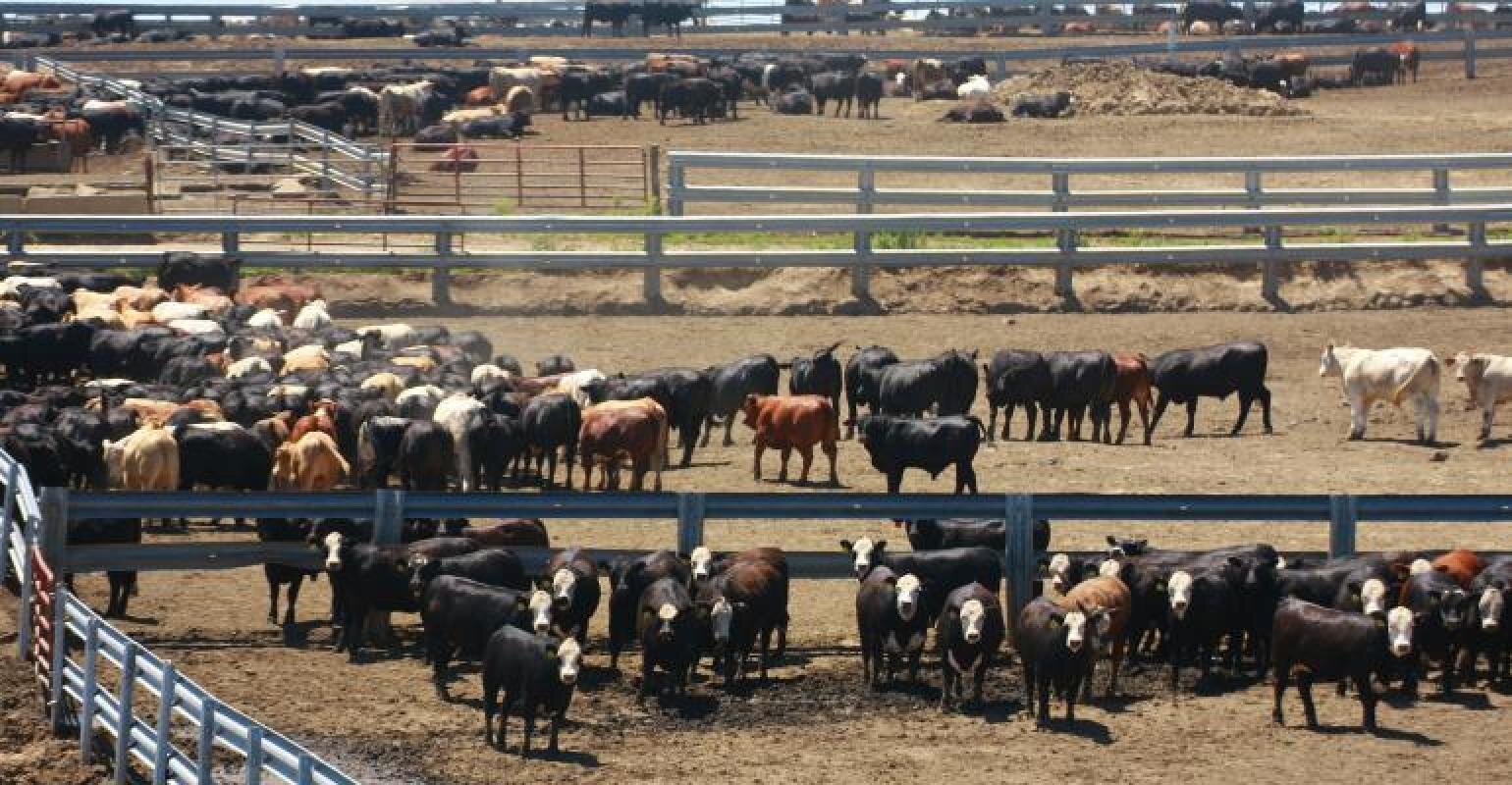
Fashion’s climate crisis cannot be solved without a just transition beyond leather production.
Even polyurethane synthetic leather boots and the impact of their supposed incineration at their ‘end of life’ (if they aren’t able to be recycled) emit almost seven times less emissions: 9.5kg of CO2e.
Image: Ethically made synthetic leather boots from BHAVA Studio
Cattle who are farmed and slaughtered in the leather, beef and dairy industries release vast amounts of methane into the atmosphere through a process called enteric fermentation. This is essentially passing gas and burping.
This is a lot more serious than it sounds.
These animal agricultural emissions are more significant than the fuel exhaust of all planes, cars and trains around the world combined.

To make 1 typical cow skin leather tote, almost 17,128L of water is used.
That’s like having around 537 showers.
If you made the same bag from PU synthetic leather, like this ethical Sans Beast bag, the water footprint would be reduced over 14 times.
Leather does not effectively biodegrade.
Not even according to the tanning industry itself, not even vegetable tanned leather.
Toxic tanneries hurting the planet and people
Chemically inorganic
Leather tanning exists to make an organic and biodegradable skin inorganic and unable to effectively biodegrade. Skins rot. Leather won’t.
90% of leather around the world is tanned with chemicals like chromium, as well as formaldehyde and arsenic.
These chemicals cause chronic coughing, skin ailments and other diseases in tannery workers, children included. They cause cancer and health issues in fish and other animals, hurting precious eco-systems.
Image: Larry C. Price
Blue chromium covered skins being handled. ~90% will be exported to countries in the west.
Top polluting industry
Every day, an estimated 40 million litres of untreated waste-water flows through major tanning country India and into the Ganges River, which people drink from and bathe in.
More tanneries than any other business type appear on the Environmental Protection Agency’s Superfund list.
So toxic, 95% of US tanneries now operate overseas to avoid environmental oversight penalties. The land under ex-tannery sites cannot be used for farming, be built on, or often even be sold.
Image: Larry C. Price
'This worker said his hands peeled off in sheets’.
‘Cancer villages’
Tannery workers suffer cancer at high rates due to exposure to tanning chemicals, which are known carcinogens.
Communal areas in top tanning country China are even being referred to as ‘cancer villages’ due to the effects of tanning and other industrial activities.
The link between industry chemical pollution and cancer in lower-income communities is well studied.
Image: Green Peace
Extreme chemical foam pollution due to tanneries and industry in the Huai river in China
The Toxic Price of Leather, by Sean Gallagher and the Pulitzer Centre. Shot in India, major leather exporter.
The human health impacts of a slaughtering fashion supply chain
Cattle farmers
Many people who work on and own animal farms are continuing their family business. That was the case for Jay Wilde, a farmer who felt he had to harden or ‘steel himself’ to send affectionate cattle to their death.
‘You couldn’t help thinking, “Do they know what you really have in store for them?” and wondering if they knew that you would betray their trust in you.’
Jay became a vegetarian in his personal life, while still farming and sending cattle to slaughter. He felt trapped.
Now, Jay is vegan and runs a plant-based farm, thanks to a farm transition project.
Slaughterhouse workers
Most of us can’t fathom working in a slaughterhouse. That’s because for many, our natural instinct is to feel affection or value for animals, not to kill them. Many people working in abattoirs have no other choice.
Studies show that slaughtering animals for a living negatively impacts a person’s mental health and outlook. Perpetration-induced traumatic stress, mental suffering that comes from having committed violent acts, is common in slaughterhouse workers.
According to Yale, these mental health problems are unfortunately likely connected to the disproportionate rise in familiar [PDF 358KB] and sexual violence [PDF 213KB] in communities living around abattoirs.
‘73 Cows’ is the story of Jay Wilde, a cattle farmer who battles with his conscience every time he takes ‘his’ cows to slaughter. Jay and his wife decide to move towards kinder, more sustainable plant-based farming. By Lockwood Films.
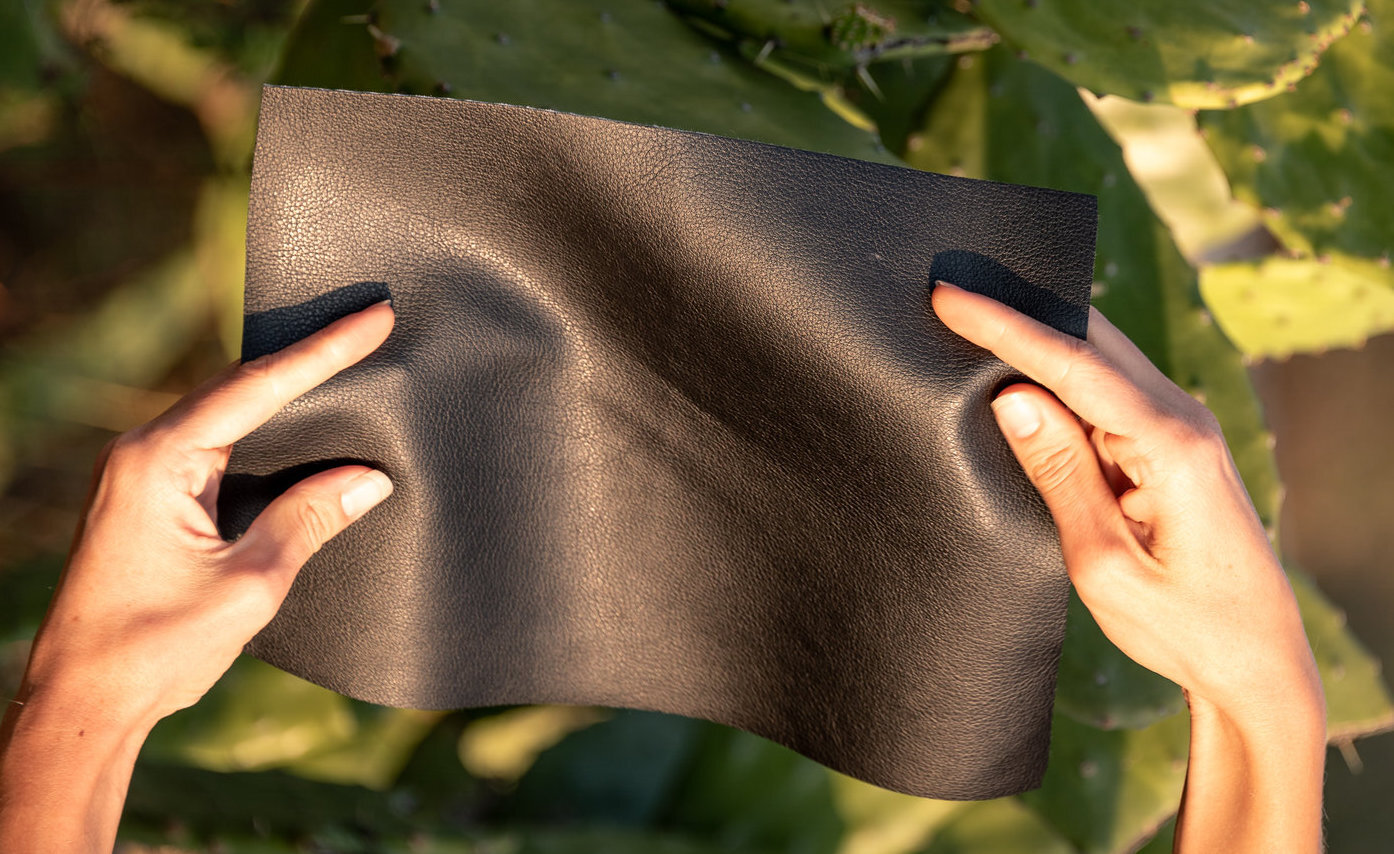
The injustices caused by leather
and our demand for it
cannot be justified.
Want to keep learning?
-
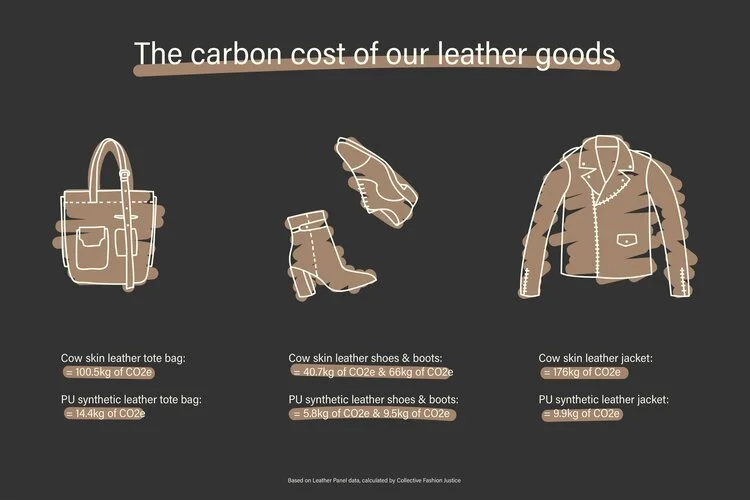
Carbon cost of leather goods
Calculations of carbon and cow skin leather products shows us that a care for environmental wellbeing is not aligned with leather production.
-
Under their skin: a report series on leather
Our report series explores the impact of leather production on people, our fellow animals and the planet in-depth, while outlining the potential for a just transition beyond leather.
-
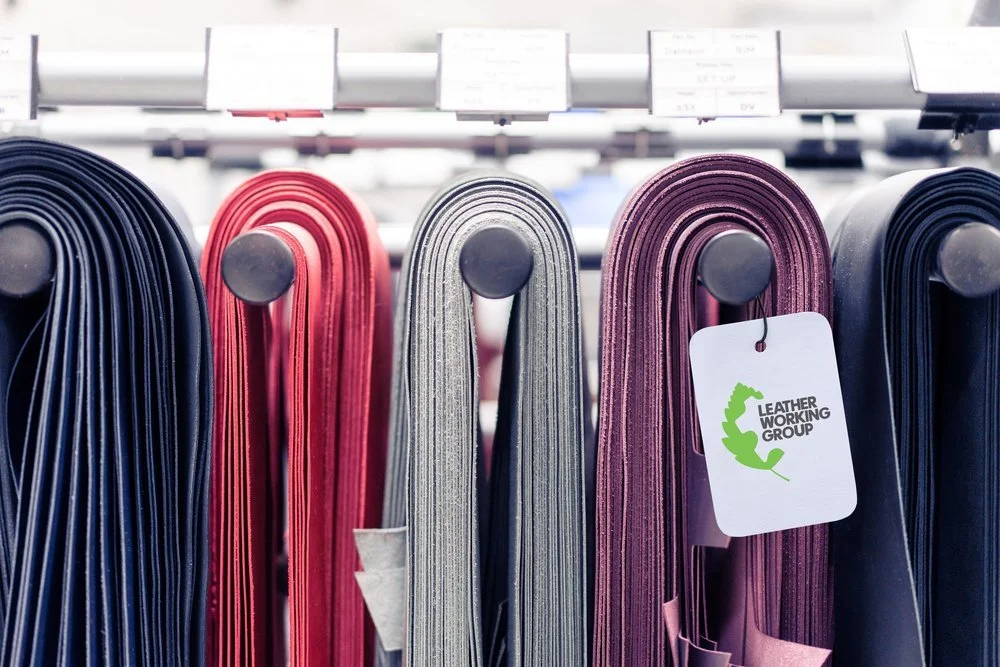
What is the Leather Working Group certification?
Brands using LWG certified leather claim to offer more sustainable leather goods. But is it really better for the planet?
